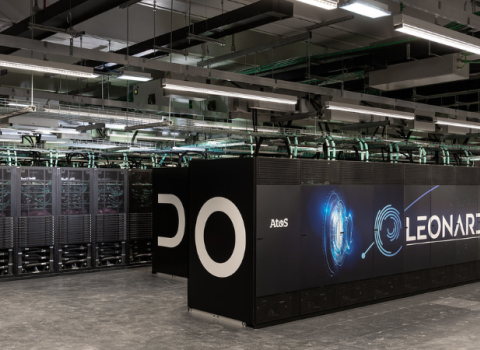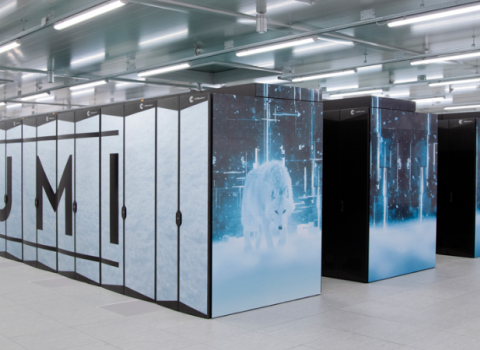The new MareNostrum 5 supercomputer, which will soon be operational at the Barcelona Supercomputing Center - Centro Nacional de Supercomputación (BSC-CNS), will be the most complete and versatile machine in the world at the service of the scientific community. Thanks to its unique computational architecture, MareNostrum 5 will make it possible to advance knowledge in fields as diverse as the development of digital twins of the Earth or the human body to study climate change and promote personalised medicine, the design of healthier and more sustainable cities, and the search for new materials.
This is according to LINPACK's Top500 list, a ranking of the world's 500 most powerful supercomputers that is updated twice a year. The new ranking was released today at The International Conference for High Performance Computing, Networking, Storage, and Analysis (HPC), the world's largest supercomputing event, taking place this week in Denver, USA.
The BSC is the only supercomputing center in Europe to have two entries in the top 20 of the Top500, including both the general purpose partition, the world's largest based on the well-known x86 computing architecture, and the accelerated partition, which will be the third most powerful in Europe and the eighth most powerful in the world, enabling research to advance in areas as important as artificial intelligence and numerical simulation.
The acquisition and operation of this EuroHPC supercomputer is funded jointly by the EuroHPC Joint Undertaking, through the European Union’s Connecting Europe Facility and the Horizon 2020 research and innovation programme, as well as the Participating States Spain – by the Spanish Ministry of Science and Innovation and the Government of Catalonia-, Portugal and Türkiye.
The capabilities and versatility of this new pre-exascale supercomputer will be fundamental to provide Europe with the most advanced technology in the field of supercomputing and accelerate the capacity for artificial intelligence research, enabling new scientific advances that will help solve global challenges. The technology company Eviden has been in charge of supplying the machine, which also incorporates technology from Lenovo and IBM, with Partec involved in its installation.
The technical characteristics of MareNostrum 5 published during the Supercomputing Conference 2023 in Denver are as follows:
MN5
Rpeak
Rmax
Green500
HPCG
General Purpose Partition (GPP)
45.4 PFlops
40.10 PFlops
6.97 GFlops/Watt
484.36 TFlops
Accelerated Partition (ACC)
260 PFlops
138.2 PFlops
53.9 GFlops/Watt
- Rpeak: Theoretical peak performance.
- Rmax: Maximum performance achieved according to the Linpack benchmark.
- Green500: Energy efficiency rating.
- HPCG: Maximum performance achieved according to the HPCG benchmark.
A heterogeneous machine to serve different fields of science
MareNostrum 5's unique architecture is designed to provide researchers with the best technology available to find answers to the big questions in science. It is a heterogeneous machine that combines two distinct systems: a general-purpose partition dedicated to classical computing, and an accelerated partition designed to push the frontiers of knowledge in artificial intelligence.
The general-purpose partition, the largest of its kind in the world, is specifically designed to solve complex scientific problems because it can share the machine's resources to run multiple tasks or programs simultaneously, rather than being dedicated to one task. This provides greater flexibility and improves efficiency by allowing different users or projects to use the supercomputer at the same time, depending on their needs.
The accelerated partition, designed to advance artificial intelligence models, is powered by thousands of latest-generation NVIDIA Hopper processors, specialised hardware accelerators designed to perform specific tasks more efficiently than general-purpose processors, accelerating computationally intensive computations in critical research areas such as numerical simulation and artificial intelligence. Specifically, MareNostrum 5 will have 4,480 of these latest generation chips, each about 8 cm2 in size, with more than twice the power of the entire MareNostrum 1 installed in 2005, which occupied the entire chapel of Torre Girona, about 160 m2, and was the fourth fastest in the world at the time.
The new MareNostrum 5 also stands out for its large storage capacity, unique in the world, which has increased from the 15 Pbytes available in MareNostrum 4 to 248 Pbytes, to which can be added more than 400 Pbytes of long-term storage using IBM technology with its Spectrum Scale file system. This storage capacity could hold 1,280 copies of the 170 million books catalogued throughout history.
The final component of MareNostrum5 is its InfiniBand NDR200-based interconnection network, which allows all of the system's more than 7,000 nodes to work together by sharing information to solve the most complex problems.
Top Supercomputing Achievement' 2023 for HPCWire magazine readers
HPCWire magazine, regarded as the most prestigious international publication in the world of supercomputing, also announced at Supercomputing Conference 2023 in Denver the winners of its annual HPCWire Readers' and Editors' Choice Awards, in which the global high-performance computing community recognises the best and most significant advances in the field over the past year.
MareNostrum 5 has been named the Top Supercomputing Achievement of 2023, a category in which the prize is awarded by HPCWire's readers, who praised how the new supercomputer installed at the BSC "combines traditional supercomputing with artificial intelligence to drive discoveries and expand new frontiers of science, including the development of digital twins that will be used to study the climate and progress towards more personalised medicine".
The commissioning of the new MareNostrum 5, expected in the coming weeks, will consolidate the BSC as one of the most important supercomputing centres in Europe, with more than 900 employees, most of them researchers in four scientific departments: Computer Sciences, Life Sciences, Earth Sciences and Computational Applications for Science and Engineering.
This article was first published on 14 November by Barcelona Supercomputing Center.





 A unique international forum for public research organisations and companies to connect their external engagement with strategic interests around their R&D system.
A unique international forum for public research organisations and companies to connect their external engagement with strategic interests around their R&D system.